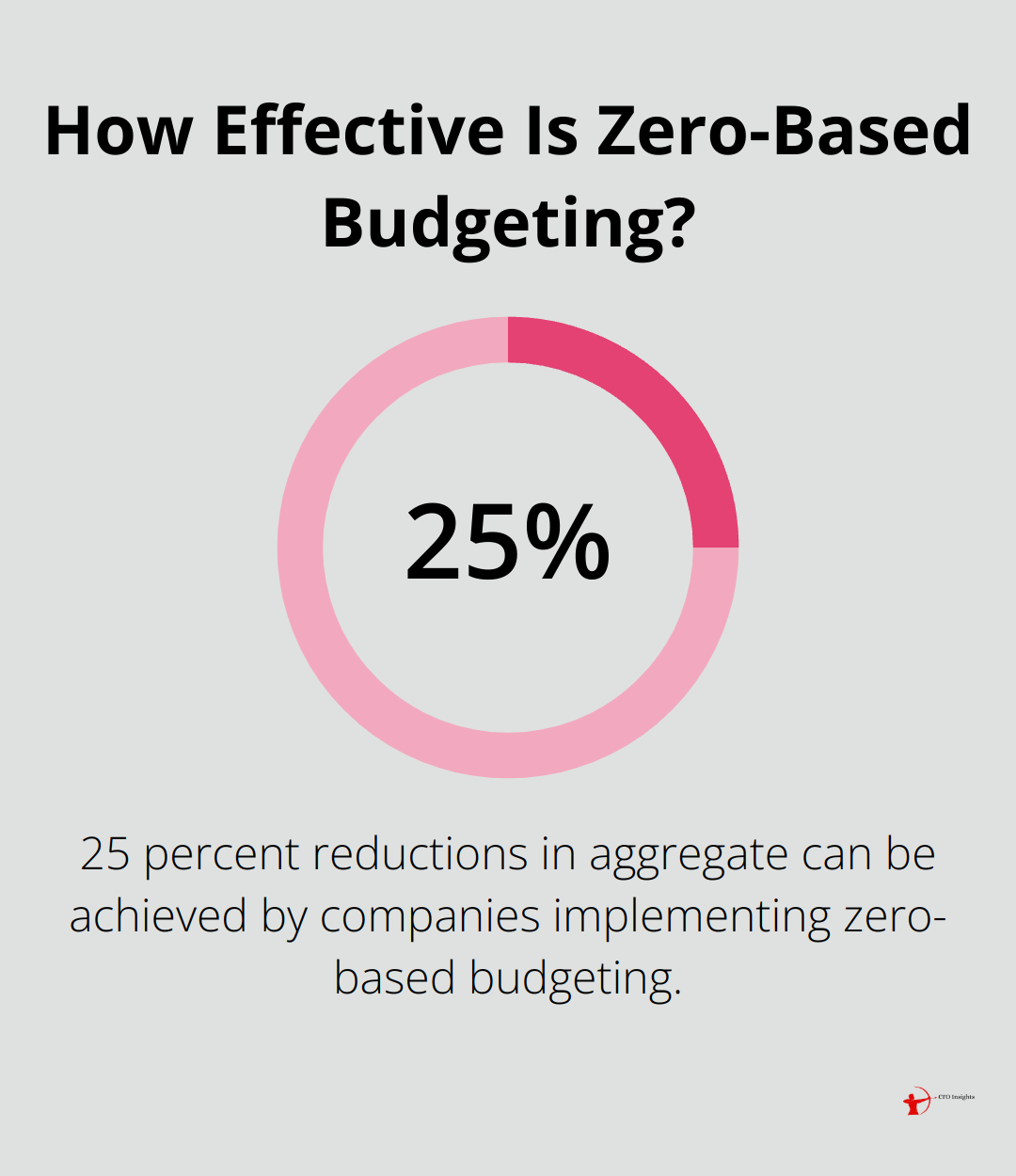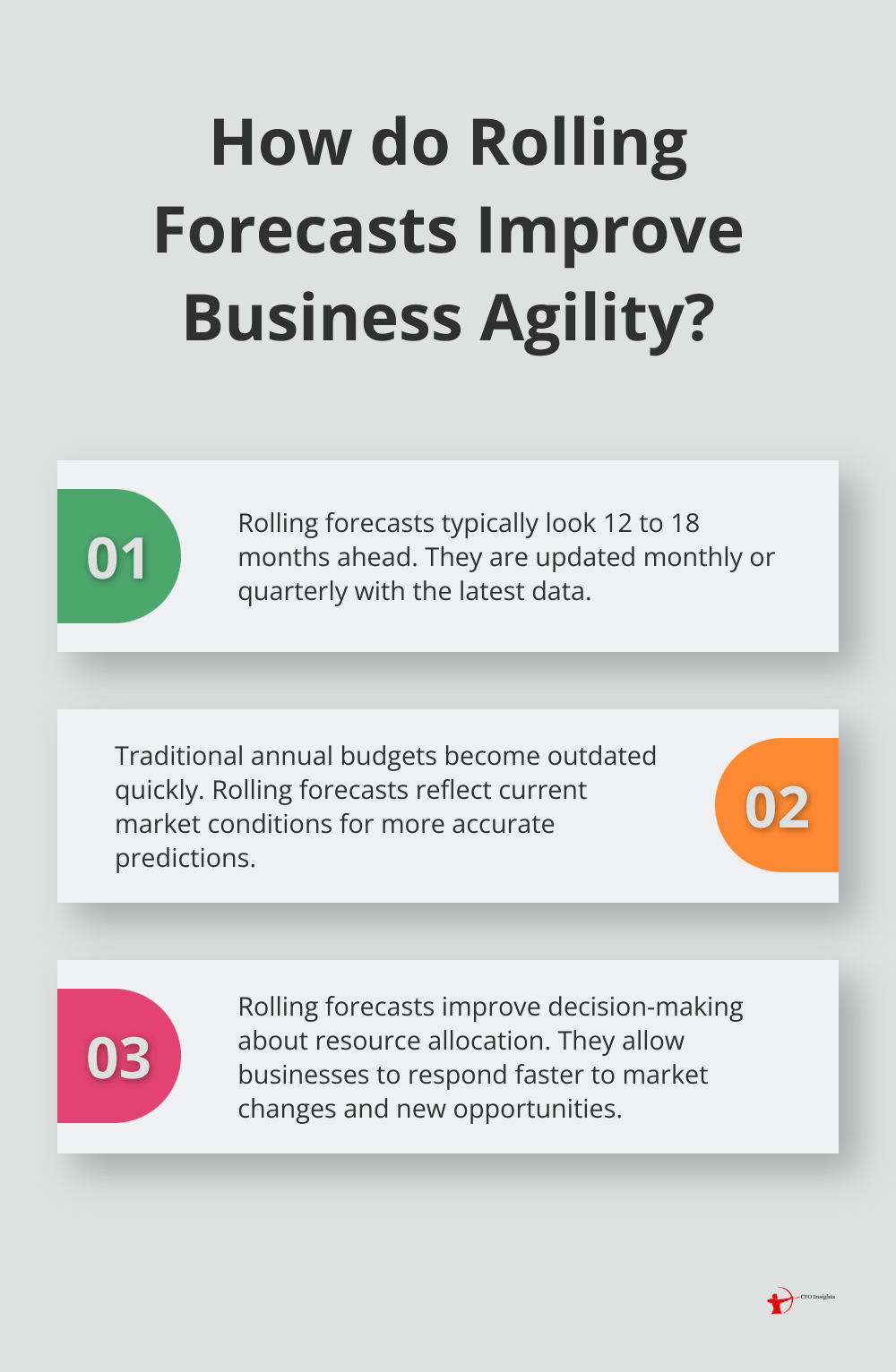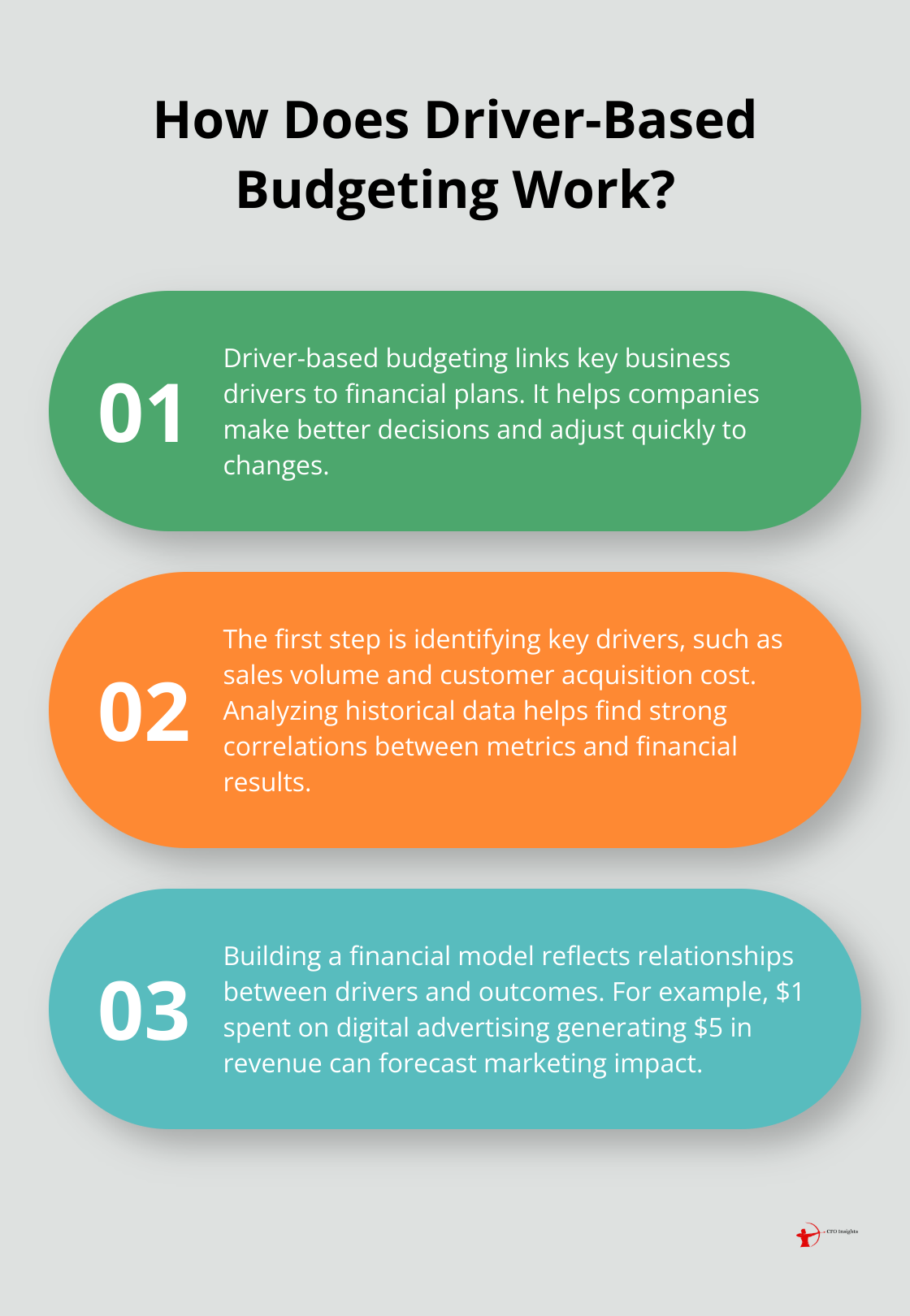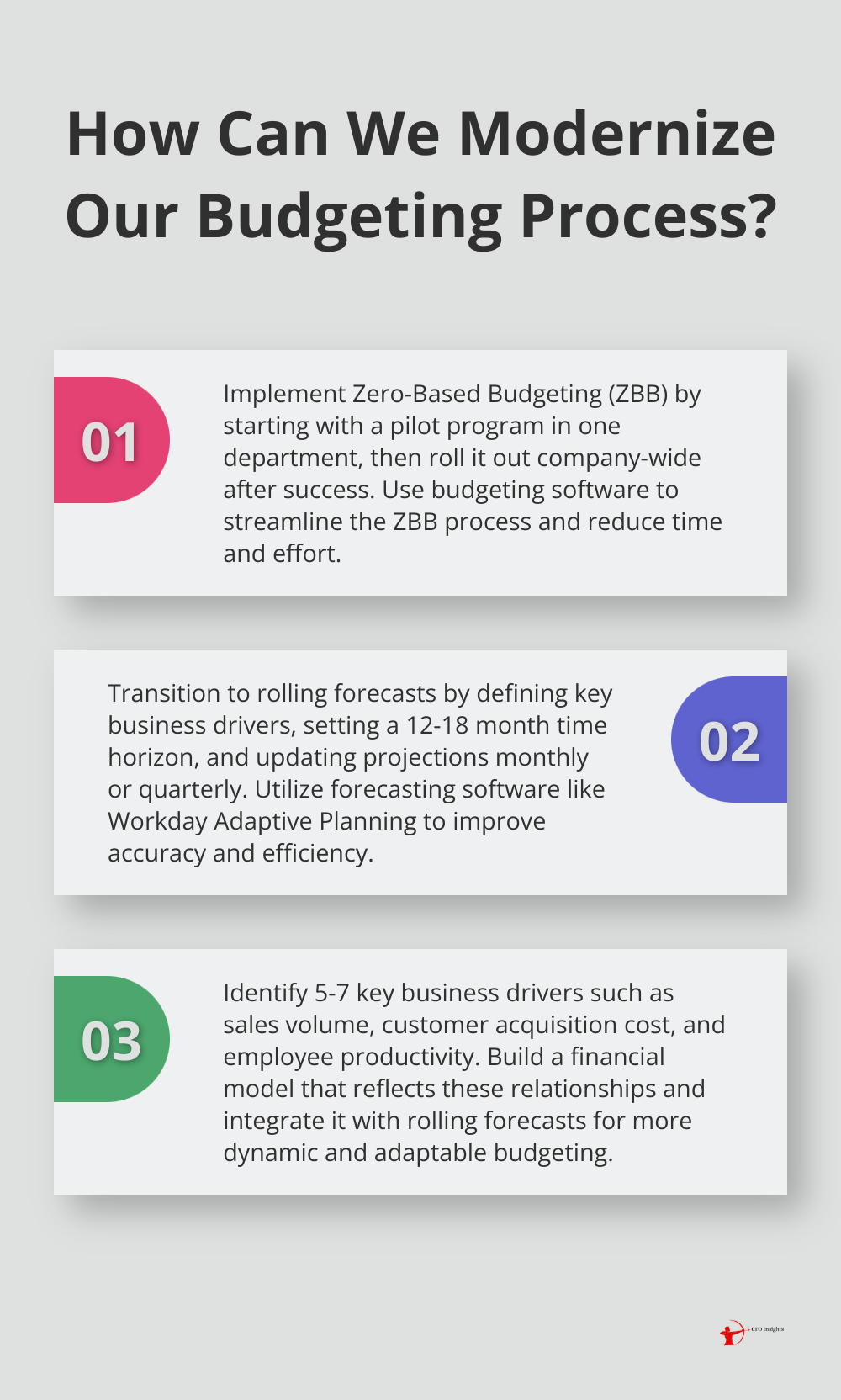At CFO Insights, we’ve seen how outdated budgeting methods can hold businesses back. It’s time for a change.
Modern companies need budgeting techniques that are as dynamic and adaptable as they are. In this post, we’ll explore three revolutionary approaches that are reshaping financial planning for forward-thinking organizations.
Zero-Based Budgeting: A Fresh Approach to Financial Planning
Understanding Zero-Based Budgeting (ZBB)
Zero-based budgeting (ZBB) is a method of budgeting in which all expenses must be justified for each new period. Unlike traditional methods that rely on previous years’ figures, ZBB requires a justification of every expense from the ground up. This approach forces a comprehensive review of all costs, often revealing inefficiencies and opportunities for savings.
The Impact of ZBB
A McKinsey & Company study highlights the potential of ZBB: companies that implement this method can achieve between 10 and 25 percent reductions in aggregate. These significant savings make ZBB an attractive option for businesses aiming to optimize their spending.
Effective ZBB Implementation
To implement ZBB successfully, follow these steps:
- Define clear objectives: Establish what you want to achieve with ZBB (cost reduction, resource reallocation, improved efficiency).
- Engage all departments: Secure buy-in across the organization by involving department heads early in the process.
- Invest in training: Provide comprehensive training to all staff involved in the budgeting process, as ZBB can be complex.
- Utilize technology: Employ budgeting software to streamline the ZBB process and reduce time and effort.
- Set realistic timelines: Allow sufficient time for thorough analysis and decision-making, as ZBB is time-intensive.
Overcoming ZBB Challenges
While ZBB offers numerous benefits, it also presents challenges. The time and resources required often pose a significant hurdle. To address this, try starting with a pilot program in one department before rolling out ZBB company-wide.

Another common challenge is employee resistance. Some staff members may view ZBB as a threat to their budgets. Clear communication about the goals and benefits of ZBB can help alleviate these concerns.
ZBB: Beyond Cost Cutting
ZBB isn’t solely about reducing expenses; it’s a tool for strategic resource allocation. The regular review of all costs ensures that a company’s spending aligns with its current priorities and market conditions. This alignment can lead to improved financial performance and competitiveness.
As we move forward, it’s important to consider how ZBB fits into a broader financial planning strategy. While ZBB offers a fresh perspective, it’s not the only innovative budgeting technique available to modern businesses. In the next section, we’ll explore another dynamic approach: rolling forecasts.
Rolling Forecasts: Adapting to Change
Understanding Rolling Forecasts
Rolling forecasts are continuous financial projections that help identify future costs and revenue trends that may influence strategic goals, policies, or services in the near- or long-term. Instead of creating a static 12-month plan, companies use rolling forecasts to update their projections continuously, typically looking 12 to 18 months ahead on a monthly or quarterly basis.

This approach differs from traditional budgeting in several key ways. Annual budgets are fixed and often become outdated quickly, while rolling forecasts reflect the most current data and market conditions. This allows for more accurate predictions and faster responses to changes in the business environment.
Advantages in Fast-Paced Markets
In today’s rapidly changing business landscape, the ability to adapt quickly is essential. Rolling forecasts offer several advantages:
- Increased Accuracy: Regular updates with the latest data lead to more accurate projections than traditional annual budgets.
- Better Decision-Making: Up-to-date financial information enables management to make more informed decisions about resource allocation and strategic initiatives.
- Improved Agility: Businesses can respond more quickly to market changes, competitive pressures, and new opportunities.
- Reduced Time and Resource Commitment: While initial implementation requires significant effort, rolling forecasts often reduce the time spent on annual budgeting exercises.
Implementing Rolling Forecasts
Transitioning to rolling forecasts requires careful planning and execution. Here are key steps to implement this approach effectively:
- Secure Leadership Buy-In: Ensure top management understands and supports the shift to rolling forecasts.
- Define Key Drivers: Identify the most important factors that influence your business performance (e.g., sales volume, pricing, market share, or operational efficiency metrics).
- Choose the Right Time Horizon: Determine how far into the future your forecasts will extend. This typically ranges from 12 to 18 months but should align with your business cycle.
- Set the Update Frequency: Decide how often you’ll update your forecasts. Monthly updates are common, but some businesses opt for quarterly revisions.
- Invest in Technology: Use forecasting software to streamline the process and improve accuracy. Tools like Workday Adaptive Planning provide enterprise solutions for planning, modeling, budgeting, and forecasting.
- Train Your Team: Provide comprehensive training to ensure all relevant staff understand the new process and can contribute effectively.
- Start Small: Consider piloting rolling forecasts in one department or business unit before rolling out company-wide.
- Improve Continuously: Review and refine your forecasting process regularly, incorporating lessons learned and new insights.
Overcoming Common Challenges
While rolling forecasts offer numerous benefits, they also present challenges. One common issue is resistance to change from staff accustomed to traditional budgeting methods. To address this, focus on clear communication about the benefits of rolling forecasts and provide ample support during the transition.
Another challenge is maintaining forecast accuracy over time. This requires ongoing attention to data quality and regular review of forecasting assumptions. Encourage a culture of continuous improvement where team members feel comfortable questioning assumptions and suggesting refinements to the process.
Rolling forecasts represent a significant shift in financial planning, but when implemented effectively, they provide businesses with a powerful tool for navigating uncertainty and capitalizing on opportunities in fast-changing markets. As we explore innovative budgeting techniques, it’s important to consider how different approaches can work together. In the next section, we’ll examine driver-based budgeting and how it complements rolling forecasts to create a comprehensive financial planning strategy.
How Driver-Based Budgeting Transforms Financial Planning
Understanding Driver-Based Budgeting
Driver-based budgeting turns key business drivers into financial plans. This method helps companies make better decisions and adjust quickly to changes.
Identifying Key Business Drivers
The first step in driver-based budgeting is to identify the key drivers of your business. These factors have the most significant impact on your financial outcomes. Common drivers include:
- Sales volume
- Customer acquisition cost
- Employee productivity
- Raw material prices
- Marketing spend effectiveness
To identify your specific drivers, analyze your historical data and look for strong correlations between certain metrics and your financial results. For example, if inventory management is a key value driver, management can focus on system and process improvements that will result in increased performance.
Building a Driver-Based Model
After you identify your key drivers, build a financial model that reflects these relationships. Create formulas that link changes in your drivers to specific financial outcomes.

For instance, if you determine that every $1 spent on digital advertising generates $5 in revenue, use this relationship to forecast the impact of increased marketing spend on your top line. Similarly, if you know that each new salesperson typically brings in $500,000 in annual revenue after their first six months, you can more accurately project the financial impact of expanding your sales team.
Implementing Driver-Based Budgeting
Transitioning to driver-based budgeting requires a shift in mindset and processes. Here are practical steps to implement this approach:
- Educate your team: Ensure all stakeholders understand the concept and benefits of driver-based budgeting. This might involve training sessions or workshops.
- Invest in the right tools: Driver-based budgeting often requires more sophisticated financial modeling capabilities. Consider upgrading your financial planning software to handle these complex models.
- Start with a pilot: Apply driver-based budgeting to one department or business unit. This allows you to refine your approach before a company-wide rollout.
- Review and update your drivers regularly: Business conditions change, and so do the factors that drive performance. Schedule quarterly reviews of your key drivers to ensure they remain relevant.
- Integrate with rolling forecasts: Driver-based budgeting works well when combined with rolling forecasts. Using the same drivers, you can create both long-term forecasts (predictions) and shorter-term budgets (financial plans) that are more dynamic and adaptable.
Overcoming Common Challenges
Driver-based budgeting offers significant benefits, but it’s not without challenges. One common issue is data quality. Your model is only as good as the data feeding into it, so invest in robust data collection and validation processes.
Another challenge is maintaining the right level of complexity. While it’s tempting to include every possible driver, this can lead to overly complicated models. Focus on the 5-7 drivers (with the most significant impact on your business).
Driver-based budgeting represents a significant shift from traditional budgeting methods. Its ability to create more accurate, actionable financial plans makes it a valuable tool for modern businesses. By linking your financial projections directly to the factors that drive your business, you can make more informed decisions and respond quickly to changing market conditions.
Final Thoughts
Modern businesses now have access to revolutionary budgeting techniques that can transform their financial planning processes. Zero-based budgeting, rolling forecasts, and driver-based budgeting each offer unique advantages for organizations seeking to improve their financial strategies. Companies must select the right approach based on their specific needs, size, and industry to maximize the benefits of these advanced methods.

The future of budgeting will likely involve increased use of artificial intelligence and machine learning to enhance forecast accuracy and automate data analysis. We expect to see a greater emphasis on agility and real-time data in financial planning as businesses strive to respond quickly to market changes. These innovations will continue to shape the landscape of financial management in the coming years.
At CFO Insights, we help organizations implement advanced budgeting techniques through our fractional CFO services. We work closely with clients to select and implement the most suitable budgeting approaches (without the cost of a full-time hire). Our expertise can support your organization’s growth and help you navigate financial challenges effectively.




